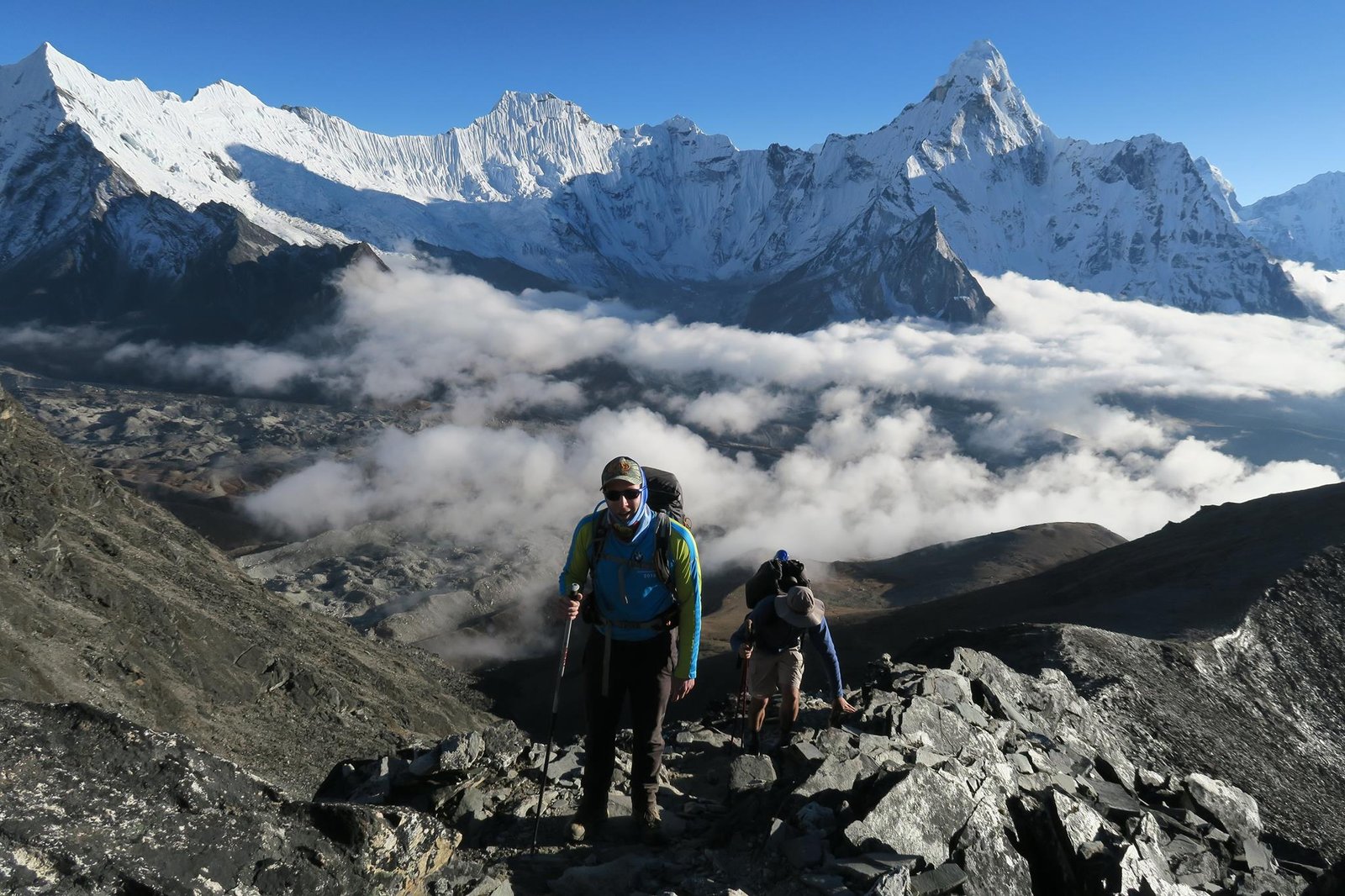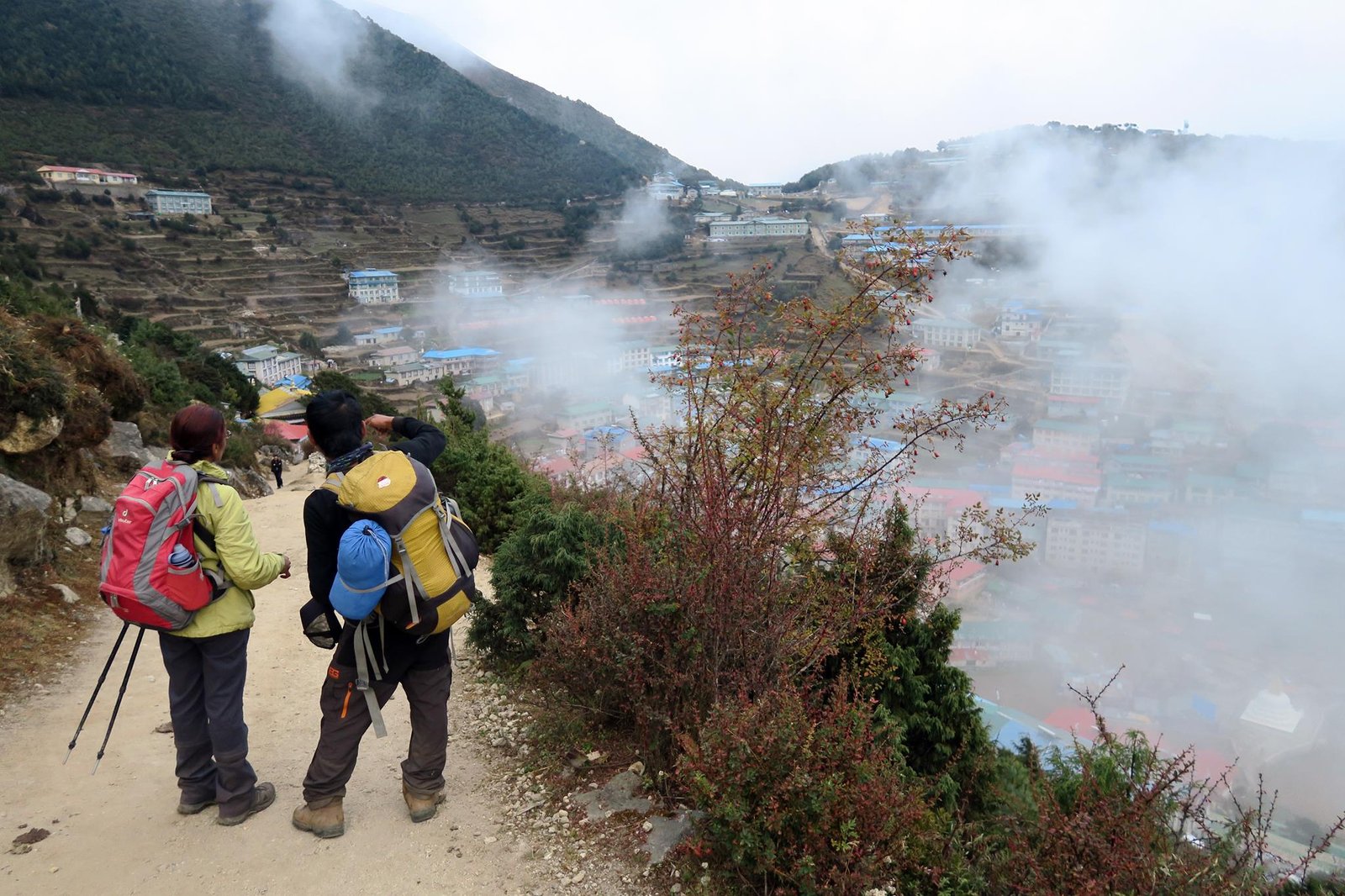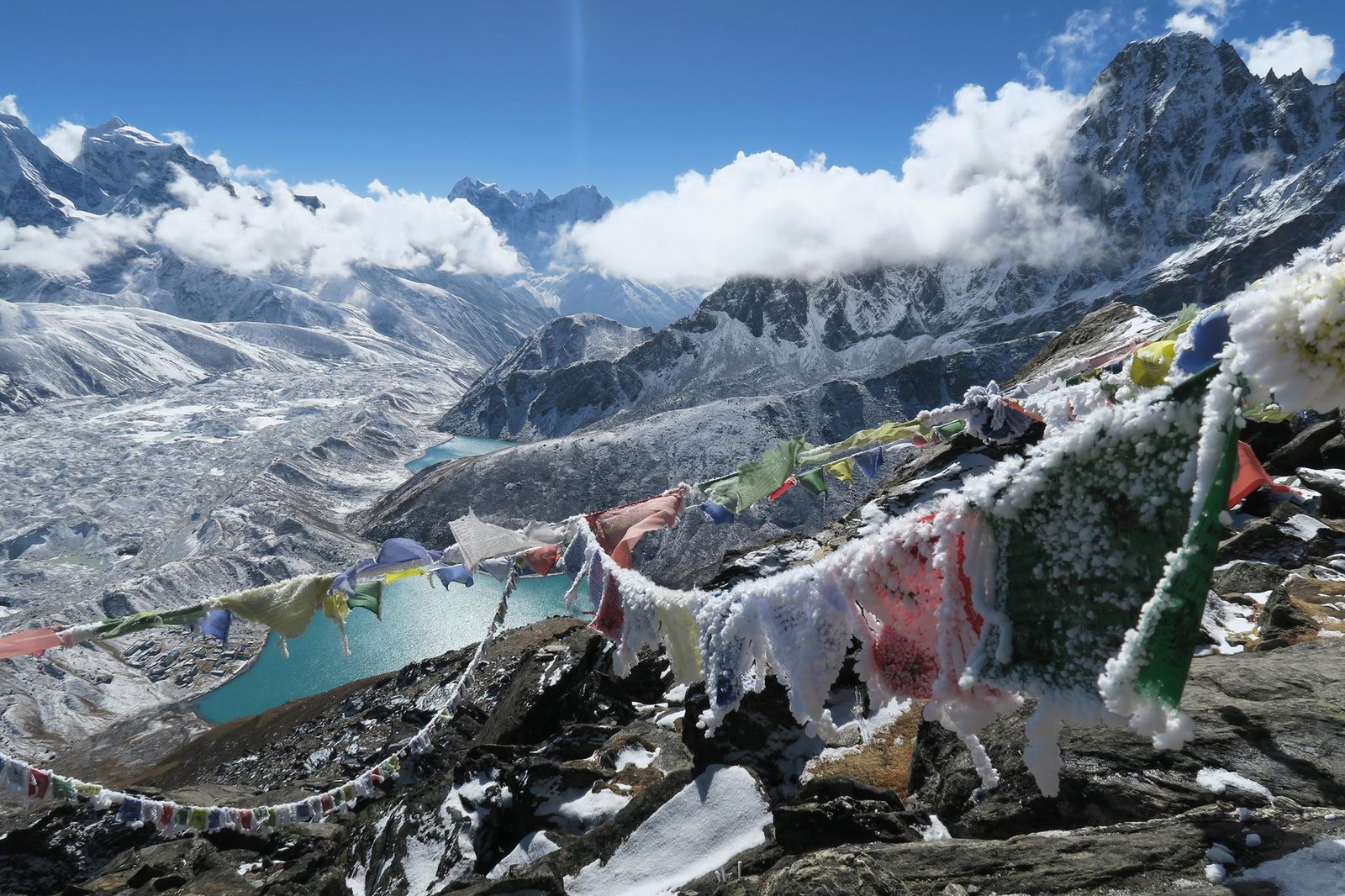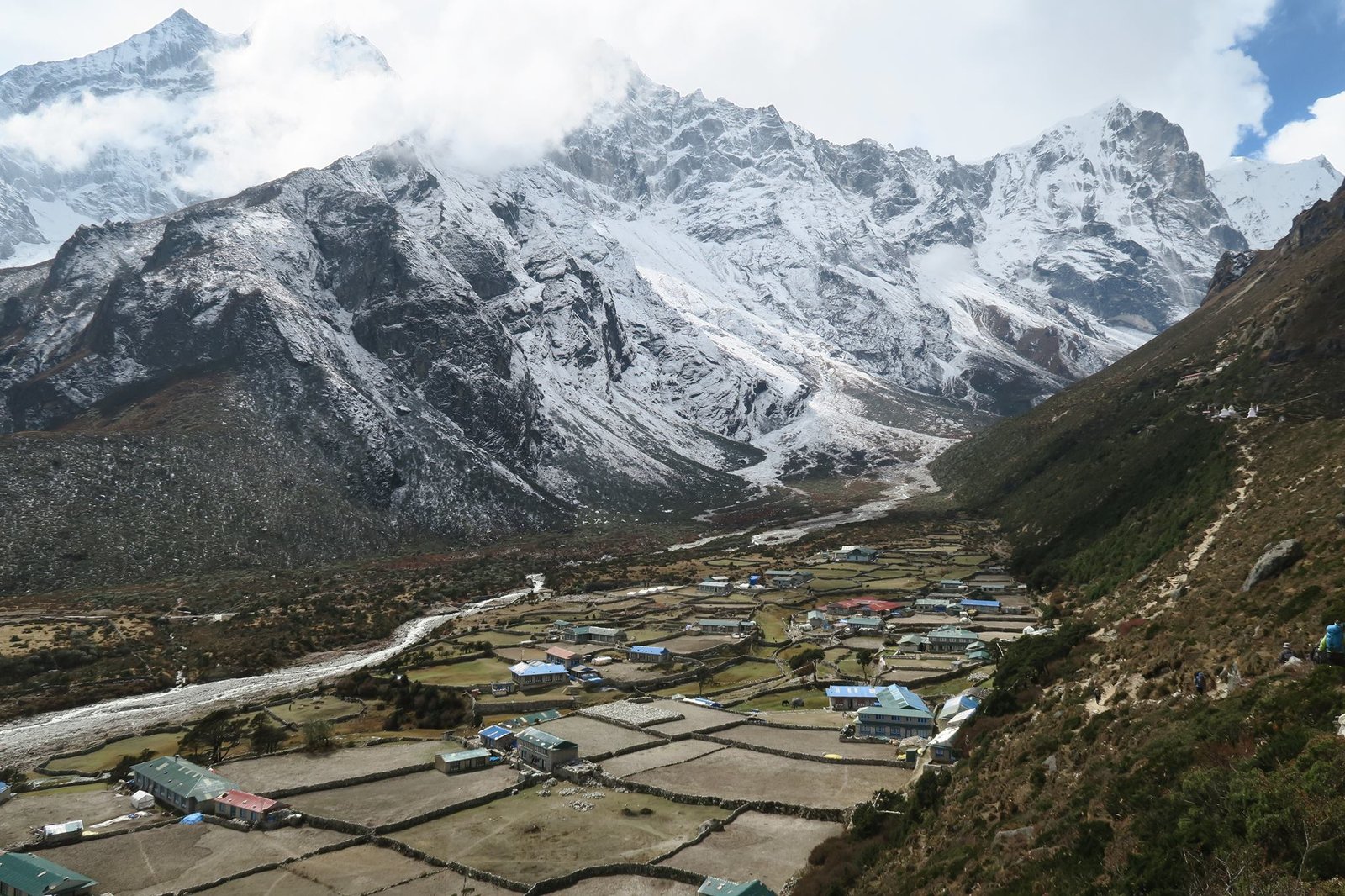Everest Three Passes Trek (Konglama Pass Cho La Pass & Renjo La Pass)
fromThe Everest Three Passes Trek is one of the best trekking routes for those who love adventures and challenges. Moreover, people also consider this trek to be one of the most challenging treks in the entire Khumbu region. If you are visiting Nepal to have the best experience of its Himalayan trails, we recommend you not to miss the Three Passes Trek.
The package is known as the Everest three-pass trek because you need to pass three treks above the altitude of 500 meters: Konglama Pass (5535m), Cho La Pass (5420m), and Renjo La Pass (5340m). Due to its amazing trail, challenging route, and exceptional view of Mount Everest, many trekkers consider the Three Pass trek as the best alternative for the Everest Base Camp trek. The trail commences from Lukla and takes you along several waterfalls, rocky paths, suspension bridges, lush forests, and magical closeup views of different mighty mountain peaks.
If you plan the Everest three-pass trek with Mercy Holidays, you will be in for a perfect and well-planned 21-day itinerary. We understand that this trek requires potentially more physical and mental wellness of the trekkers. Therefore, our representatives (guides) will take proper care of your acclimatization throughout the trek. Moreover, you can also contact us for any type of customization in the package. So, if you have sufficient time and want to go for the best walk on the base of Mount Everest, the Everest Three Passes Trek serves as the best choice.
-
Reviews 0 Reviews0/5
-
Vacation Style Holiday TypeTrekking
-
Activity Level Challenging
-
Everest three high passes trekking route offers you the opportunity to conquer seven peaks above 5,000 meters:
- Nagarkasang peak(5100m)
- Chola pass(5380m)
- Gokyo Ri (5483m)
- Rengjo la (5388m).
- Chukkingri (5550m)
- Konglama pass (5535m)
- Everest Base Camp (5345m)
- Kalapatthar (5545m)
Highlights
KTM-Lukla Mountain flight with amazing mountain views
Chance to explore 8 peaks above 5,000m
Trek to the adrenaline-pumping Three High Passes
Peek into the Himalayan culture and their unique lifestyle
Exploration of the mesmerizing Gokyo Lakes
A rare encounter with Himalayan wildlife and flora
Note: This is a two-way orientation trek. In short, you can choose to either complete the trek in the clockwise or anticlockwise direction. Clockwise Trail: Khongmala-EBC-Chola Pass-Gokyo Lake-Renjo Pass-Namche AntiClockwise trail: Namche-Renjo Pass-Gokyo-Chola Pass-EBC-Khonmala-Dingboche-Namche.
- Day 1 Arrival at Kathmandu Airport
- Day 2 Kathmandu Sightseeing and Trek Preparation
- Day 3 Flight to Lukla (2800m/9186ft), Trek to Phakding (2650m/8694ft) [40 minutes flight and 3-4 hour trek]
- Day 4 Trek to Namche Bazar (3440m/11286ft) approx. 6-7 hour
- Day 5 Hike to Everest Views hotel [approx walk 5/6hours] and trek to Kyangjoma
- Day 6 Trek to Tengboche Monastery (3860m/12664) [approx. walks 6- 7 hours]
- Day 7 Trek to Dingboche (4410m/14468ft) [approx. walk 6-7 hours]
- Day 8 Acclimatization day, Hit Nangkar Tshang Peak (5100m/16732) approx. walk 4 hours
- Day 9 Trek to Chhukhung (4730m/14665ft), Optional hike to Chhukhung Ri (5550m/18208) [approx walks 8-10 hours]
- Day 10 Trek to Lobuche (4910m/16108ft) by crossing Kongma-La Pass (5535m/18159ft) [approx. walks 8-10 hours]
- Day 11 Trek to Gorakshep(5140m/16863ft) Excursion to Everest Base Camp (5365m/17601ft) [approx. walk 7-9 hours]
- Day 12 Trek to Dzongla (4830m/15846ft), Optional Trek to Kalapatthar (5545m/18192) [approx. walk 7-8 hours
- Day 13 Trek to Thanagnag Kharka (4765m/15633ft) via crossing Cho-La Pass (5380m/17650ft) [approx. walk 8 hours]
- Day 14 Trek to Gokyo Lake (4790m/15715) [approx. walk 3 hours]
- Day 15 Acclimatization Day and hike to Gokyo Ri (5357m/17575ft) [approx. walk 5-6 hours]
- Day 16 Trek to Lungdhen (4380m/14370) via crossing Renjo-La Pass (5360m/17585ft) [approx. walk 8 hours]
- Day 17 Trek to Namche Bazar (3440m/11286ft) [approx. walk 7-9 hours]
- Day 18 Trek to Lukla (2860m/9383ft) approx. walk 7-9 hours
- Day 19 Flight from Lukla to Kathmandu
- Day 20 Free Exploration Day at Kathmandu
- Day21 Fly Back Home
When trekking in Nepal, especially in the popular trekking regions like the Everest, Annapurna, or Langtang regions, tea houses are a common and convenient accommodation option. Tea houses are small lodges or guesthouses that provide basic facilities for trekkers. Here are some key points to keep in mind about accommodation at mountain tea houses while trekking in Nepal:
- Basic Facilities: Tea houses offer basic facilities such as a bed, blankets, and a shared bathroom. The level of comfort may vary, but it’s essential to keep in mind that these are basic accommodations in remote mountain areas.
- Food: Tea houses also serve meals, and the menu usually includes a variety of local and international dishes. It’s recommended to try the local cuisine, as it is often freshly prepared and can be a unique experience.
- Advance Reservation: After confirming your trip with Mercy Holidays make your reservation according to your travel itinerary.
- Altitude Considerations: As you ascend to higher altitudes, the facilities may become more basic, and heating may be limited. Be prepared for colder temperatures, and make sure to have appropriate gear, including a warm sleeping bag.
- Cultural Etiquette: Respect the local culture and customs. Remove your shoes before entering common areas, and be mindful of local traditions. It’s also a good idea to greet the locals with a “Namaste.”
- Water and Sanitation: Tea houses may have shared bathroom facilities, and hot showers may be available for an additional cost. It’s advisable to carry a refillable water bottle and use water purification methods to ensure safe drinking water.
- Electricity and Charging: Electricity may be available in the tea houses, but it’s not guaranteed. Charging electronic devices may incur an extra cost, and it’s wise to carry a portable charger or a power bank.
- Tipping: Tipping is customary in Nepal. It’s a way to show appreciation for the services provided. While there isn’t a fixed amount, a general guideline is to tip around 200 Nepali Rupees.
Overall, staying in tea houses is a unique and immersive experience that allows you to connect with the local culture and enjoy the stunning landscapes of the Himalayas. Always check the latest information and conditions before embarking on a trek, and be prepared for the challenges of trekking at high altitudes
- Airport Pickup and Drop by Private Vehicle.
- Kathmandu Valley UNESCO World Heritage Site Sightseen
- Welcome dinner at a Nepalese restaurant with a culture show.
- 3 Night Accommodation at Kathmandu on 3 Star Category Hotel with BB plan (Bed and Breakfast)
- Round trip domestic airfare (Ktm-luk-ktm)
- National Park entry ticket
- 1 Experience Trekking Guide and (2 Guest =1 Potter)
- Mountain Tea House, accommodations with full board meals during the trek (Breakfast, lunch and dinner)
- Travel insurance for Nepali staff (Guide and Potter)
- Travel insurance and emergency evacuation.
- Personal expenses (like phone calls, Wi-Fi changes, bar bills, battery changes, extra potters, hot showers etc.)
- Nepal Visa fees
- Lunch & Dinner in Kathmandu Hotel.
- In case of natural calamities i.e. political unrest, cancellation of flight due to weather, landslides etc the extra charge should be borne by clients.
- Tips for trekking staff.
- The best trekking seasons are spring (March to May) and autumn (September to November). These periods offer stable weather and clear skies.
- Most treks require a TIMS (Trekkers’ Information Management System) card and a trekking permit issued by the respective trekking area’s conservation or national park authority.
- Popular treks include the Everest Base Camp trek, the Annapurna Circuit, the Langtang Valley trek, and the Manaslu Circuit. Each offers unique landscapes and cultural experiences.
- Trek difficulty varies. Some treks are relatively easy and suitable for beginners, while others are more challenging and demand a higher level of fitness and experience.
- Yes, acclimatization is crucial to avoid altitude sickness. It involves gradually ascending to higher altitudes, allowing your body to adjust to lower oxygen levels.
- Essential items include trekking boots, weather-appropriate clothing, a good backpack, a sleeping bag, trekking poles, a water bottle, and personal hygiene items. Pack according to the specific trek and season.
- Most popular trekking routes have teahouses (lodges) where you can find accommodation and meals. Camping is usually not necessary on well-established routes
Yes, travel insurance that covers trekking activities and potential medical emergencies is highly recommended.
- During trekking, you will be served meals in the teahouses. Typical meals are rice, pasta or potato dishes along with vegetables and egg/chicken/meat dishes. Other items mostly served as breakfasts include porridge, muesli and toast with peanut butter and honey.
- While some popular routes have ATM facilities, it’s advisable to carry enough cash for the entire trek, as remote areas may not have banking facilities.
Remember that conditions can change, and it’s important to check for the latest information and guidelines before embarking on a trek in Nepal.








